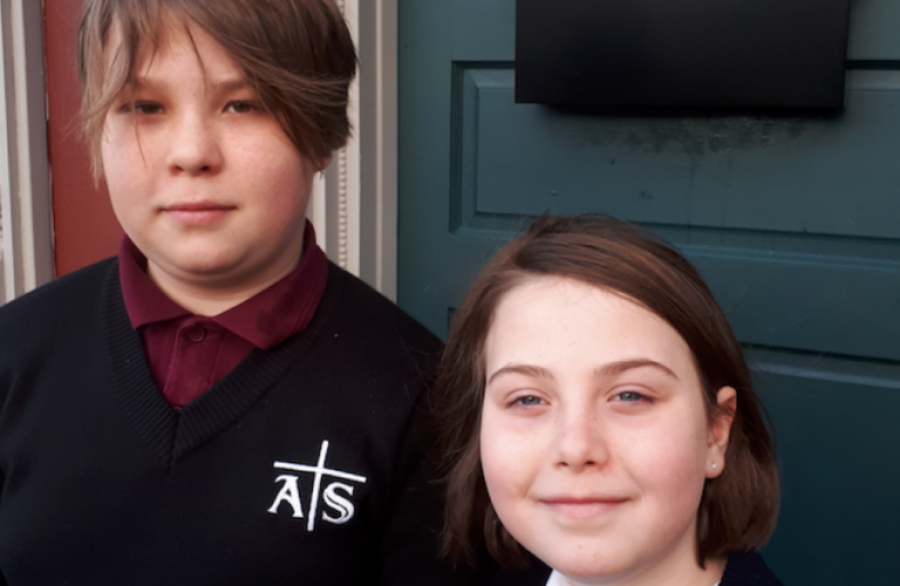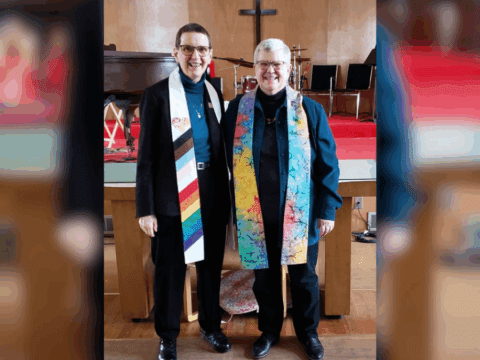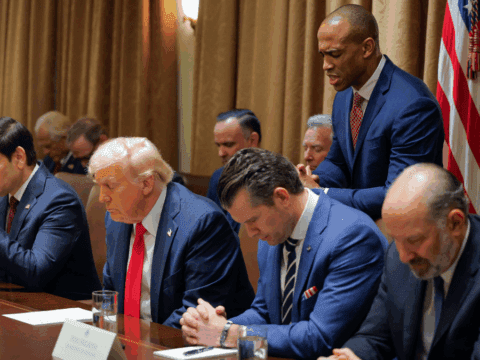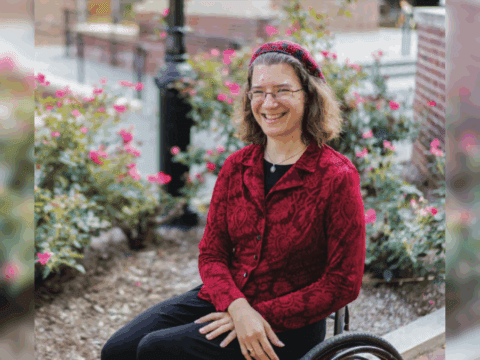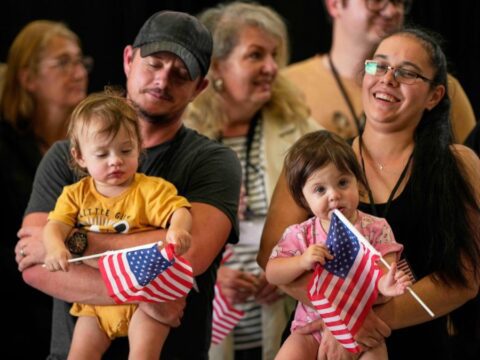Last year, I walked my then eight-year-old daughter past three statues of Mary at her new school. The first was by the parking lot, about Abi’s height and in blue robes. The second, a little taller and at the front doors, was all white and surrounded by a ring of bright yellow chrysanthemums. And the third, on a table just outside Abi’s classroom, was draped with a rosary, holding her hands in prayer.
In September 2017, my husband and I switched our daughter out of public school and into a Catholic one, even though neither of us could recite the Hail Mary. The first several times we walked into the building, I cringed slightly at Mary — a character I’d never really considered before. Here was an image of saintly womanhood, the perfect mother. She’s always gentle and joyful in her God-sent duties, and so tidy. Certainly not, at first glance, an image of modern feminism.
I, on the other hand, juggle career, kids, marriage, community and chaos. I’m usually running late, having screamed at the kids about tooth brushing or backpacks — anything but gentle. Those three statues heightened my awareness that too often I fail at mothering well. Every morning, I’d try to rush past the Marys, but Abi would dawdle. She loved them, just like she loved the rosary and the old language of the Catholic prayers. I was perplexed, but after a few months I started to understand the attraction. It was as though Abi saw herself in the face of this divine feminine. The loveliness of Mary was the loveliness of Abi. And now, I want Abi to hold that feeling of worth and warmth in her heart.
Admittedly, this connection wasn’t what we expected when we decided to enrol Abi in her new school. We were hesitant, not only because we weren’t (and still aren’t) Catholic, but because of our belief in a public school system. Unlike in Ontario, Saskatchewan, Alberta, Yukon and Northwest Territories, where Catholic schools are fully publicly funded, we live in British Columbia and pay $351 per month for Abi’s education. While that amount is relatively minuscule compared to other private schools, it still seemed elitist to us.
But Abi wasn’t thriving in the public system. At the end of Grade 2, my bright, eager daughter still couldn’t read fluently, and her penmanship looked like a toddler’s. After a few months in Catholic school, she was breezing through chapter books and writing decently structured paragraphs that I could read without squinting. Simply put, Catholic school provided Abi with foundational skills, such as caring about the quality of her work and paying attention in class, all of which resulted in a better education.
And we’re far from the only non-Catholics taking this path. On the faith-averse West Coast, nearly a third more of this generation’s parents choose Catholic school for their children compared to parents in the late 1970s, according to data from B.C.’s Federation of Independent School Associations. In Ontario, which supports the country’s largest separate school system, Catholic schools have maintained their share of about a third of the student population even as Catholicism among Canadians has dwindled.
How did this happen? What made parents unlikely to sit in a pew on Sunday morning decide to send their kids to Catholic school? A 2017 CBC article about the trend says that the former B.C. Liberal government’s “16 years of labour conflict, funding cuts, school closures and overcrowding” contributed to the shift away from public schools. But I’m not sure that entirely explains it. So I asked some other United Church parents why they chose to send their kids to Catholic school.
Rev. Melody Duncanson-Hales’s three children, aged 10 to 16, go to Catholic schools in Sudbury, Ont. She is Manitou Conference’s mission and stewardship animator and works for the philanthropy unit of the national church. Her husband is a Catholic theologian. “Our life work is around ecumenism,” she explains. “I wanted our kids to have a Christian education. This has everything to do with a shared Christian experience at home, church and school.” She had some concerns at first about inclusiveness but has been “pleasantly surprised” at how open the schools have been. She says she’s found a nest where her children’s religiosity and social justice awareness are nurtured.
In Burlington, Ont., Michel Ray-Zarate and his wife both teach high school in the public system. Their two oldest children go to French Catholic school; their youngest will soon join them. They are United Church members, but their attendance at church and Sunday school can get spotty. Ray-Zarate and his wife like the weekday religious education. “Last Christmas, [our eldest] was dressing up as Mary all the time,” he says. “Had she done that at public school, I’m not sure how it would fly.”
Catholic school provided Abi with foundational skills, such as caring about the quality of her work and paying attention in class, all of which resulted in a better education.
For Darria Langill, a recent family move from Ottawa to Truro, N.S., meant pulling her daughter out of Catholic school, as none are available nearby. Langill is a scientist and a United Church lay worship leader. “Emma was being exposed to church life on all sides,” she says. “I was very impressed that [after going to Catholic school] she could rhyme off the Lord’s Prayer no problem.”
As a scientist, Langill was careful to talk to her daughter about how Creation and evolution can co-exist, and found that the different perspectives offered in Catholic school opened doors for conversation rather than closed them. Now, she is thrilled to see her daughter’s richer understanding of her Catholic friends’ faith and church life.
Last January, I also switched my quiet, introverted son, David, into Catholic school for the remainder of his Grade 6 year. Learning had halted for him in his public school classroom, largely due to the chaos and noise. Six months later, he’s extremely well-versed in anti-abortion arguments — his teacher’s passion — but also understands the Kinder Morgan pipeline project, American immigration policies and many other pressing social justice issues from both factual and moral perspectives. He is independently producing the most beautifully written work I’ve ever read from a preteen. In other words, his brain and heart are full, just like his sister’s.
In our experience, Catholic education has been better for us. The class sizes are the same as our former public school; the families are not wealthier; the classrooms are just as diverse in ethnicity and special needs; the core curriculum is the same; the school’s budget is similar. So what’s the difference?
Maybe it’s Mary — the presence of an ideal beyond the everyday rough-and-tumble. This school year, when I walk my uniformed kids past the Mary statues, I’ll give her a nod of respect. She’s not there to judge me. I’m there to embrace her loveliness, worth and warmth.

